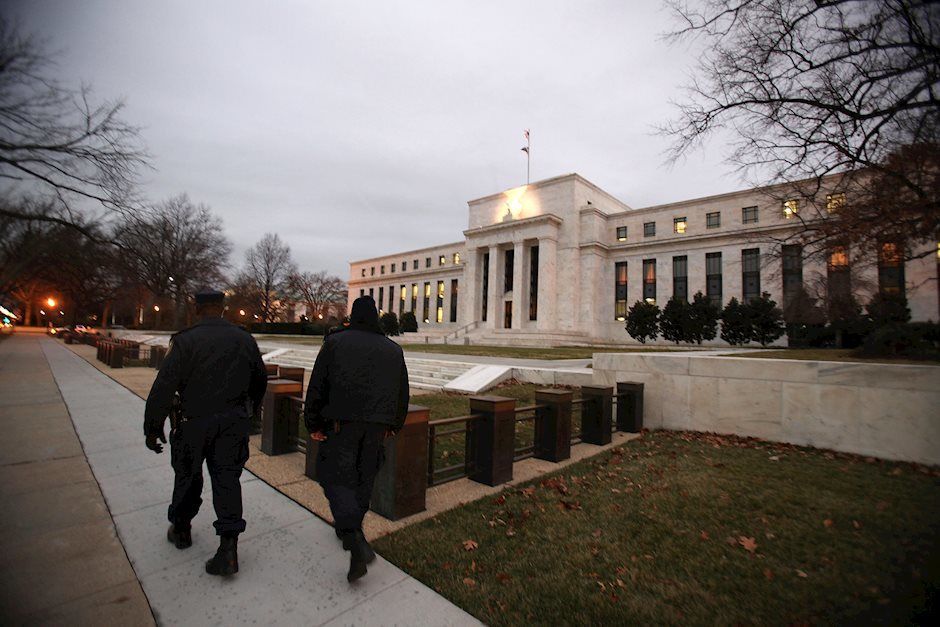Fed officials continue to warrant caution on inflation, as eyes turn to US PCE data
- Commentary from Fed officials on interest rates and inflation outlook will be closely scrutinized this week.
- Fedspeak could help reverberate the market expectations for a September rates on-hold decision.
- Fed rate outlook could significantly impact the value of the US Dollar across its major rivals.

Federal Reserve (Fed) policymakers are set to make their scheduled appearances on Tuesday, as full markets return, anticipating the release of the high-impact US PCE inflation due later this week.
Meanwhile, the US Dollar remains under moderate selling pressure so far this week, extending Friday’s downside, fuelled by an unexpected easing in UoM 5-year Consumer Inflation Expectations for May. The reading came in at 3.0%, down from April’s 3.1% and below the market consensus of 3.1%.
Markets are pricing in a 50% probability that the Fed will hold interest rates in September, according to the CME Group’s FedWatch Tool. In the past week, Fed policymakers leaned in favor of a cautious stance on the inflation outlook, raising concerns amongst the market participants on potential Fed rate cuts this year.
Looking ahead, in the early American session, Federal Reserve Bank of Minneapolis President Neel Kashkari speaks and participates in a panel before the Barclays-CEPR International Monetary Policy Forum. Later on, Fed Governor Lisa Cook and San Francisco Fed President Mary Daly will take up the rostrum to share their thoughts at a panel discussion titled "AI and the Economy" at an event hosted by the Federal Reserve Bank of San Francisco.
Fed officials' recent comments
Fed Governor Michelle Bowman noted on Tuesday that she "would have supported either waiting to slow QT pace or a more tapered slowing in balance sheet run off," while adding that it is "important to keep reducing balance sheet size to reach ample reserves as soon as possible and while economy is strong."
Meanwhile, Cleveland Fed President Loretta Mester did not touch upon the topic of monetary policy. She expressed her take on the Fed communications, noting that it "would be preferable for FOMC statements to use more words to describe the current assessment of the economy, how that influences the outlook and the risks to that outlook."
However, in a CNBC News interview during the European hours, Minneapolis Fed President Neel Kashkari spoke on inflation and interest rate outlooks. Kashkari said that the Fed should wait for significant progress on inflation before lowering the policy rate, per Reuters. He also raised the possibility of the Fed hiking rates if inflation fails to cool down further.
Economic Indicator
Personal Consumption Expenditures - Price Index (YoY)
The Personal Consumption Expenditures (PCE), released by the US Bureau of Economic Analysis on a monthly basis, measures the changes in the prices of goods and services purchased by consumers in the United States (US). The YoY reading compares prices in the reference month to a year earlier. Price changes may cause consumers to switch from buying one good to another and the PCE Deflator can account for such substitutions. This makes it the preferred measure of inflation for the Federal Reserve. Generally, a high reading is bullish for the US Dollar (USD), while a low reading is bearish.
Read more.Next release: Fri May 31, 2024 12:30
Frequency: Monthly
Consensus: 2.7%
Previous: 2.7%
Source: US Bureau of Economic Analysis
Fed FAQs
Monetary policy in the US is shaped by the Federal Reserve (Fed). The Fed has two mandates: to achieve price stability and foster full employment. Its primary tool to achieve these goals is by adjusting interest rates. When prices are rising too quickly and inflation is above the Fed’s 2% target, it raises interest rates, increasing borrowing costs throughout the economy. This results in a stronger US Dollar (USD) as it makes the US a more attractive place for international investors to park their money. When inflation falls below 2% or the Unemployment Rate is too high, the Fed may lower interest rates to encourage borrowing, which weighs on the Greenback.
The Federal Reserve (Fed) holds eight policy meetings a year, where the Federal Open Market Committee (FOMC) assesses economic conditions and makes monetary policy decisions. The FOMC is attended by twelve Fed officials – the seven members of the Board of Governors, the president of the Federal Reserve Bank of New York, and four of the remaining eleven regional Reserve Bank presidents, who serve one-year terms on a rotating basis.
In extreme situations, the Federal Reserve may resort to a policy named Quantitative Easing (QE). QE is the process by which the Fed substantially increases the flow of credit in a stuck financial system. It is a non-standard policy measure used during crises or when inflation is extremely low. It was the Fed’s weapon of choice during the Great Financial Crisis in 2008. It involves the Fed printing more Dollars and using them to buy high grade bonds from financial institutions. QE usually weakens the US Dollar.
Quantitative tightening (QT) is the reverse process of QE, whereby the Federal Reserve stops buying bonds from financial institutions and does not reinvest the principal from the bonds it holds maturing, to purchase new bonds. It is usually positive for the value of the US Dollar.
Author

FXStreet Team
FXStreet

















